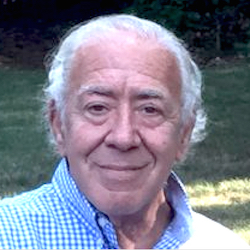
In senior living communities, many residents may go for long periods without a visit from family or friends in a typical year. As a result, the activities department generally facilitates the only engagement and socialization residents receive on a daily basis. This limited window of interaction creates a greater demand to provide activities that have the greatest quantifiable improvements in older adults’ quality of life.
Recent breakthroughs and clinical studies indicate that virtual reality could be the perfect fit for achieving the goal of producing significant improvements in seniors’ mental and physical health. Studies in the past decade have demonstrated substantial increases in seniors’ mental functioning, memory, well-being and multi-tasking, as well as other important key improvements.
Interestingly, VR use in older adults helps combat the symptoms and development of Alzheimer’s disease, which 50% of residents experience, according to the journal Frontiers in Aging Neuroscience. These impressive positive results also applied to senior motor control, balance, spatial waywardness and a host of other medical concerns.
This breakthrough in VR senior living activities can provide greater stimulation and mental growth compared with traditional models of activities using passive mediums such as TV and even more interactive activities such as puzzles. VR allows participants to explore locations and experiences around the world as if they were there in person. This helps provide residents with a sense of personal freedom while reducing their feelings of loneliness and isolation.
The benefits are multiplied in residents who are bedridden or in wheelchairs by allowing them to relive the experiences of walking, skiing, swimming and other actions beyond their physical limitations. The power of instantly experiencing a wide range of new opportunities helps reignite residents’ overall passions for life and mental engagement.
One of the most surprising discoveries is that VR provides twice the pain reduction as morphine, without any of the side effects of traditional pain medicine. In a breakthrough study by HIT Labs and Simon Fraser University, severe burn victims were given a snow themed VR experience during times of intense pain. Patients reported a 60% to 75% reduction in pain with VR sessions when using no painkillers compared with a 30% pain reduction when patients used only morphine.
When families look for senior living communities for their loved ones, finding a location with the highest value of amenities and support systems is a primary concern. Communities that invest in VR could distinguish themselves as leaders in the field.
Advancements in technology not only help with keeping beds and rooms filled, but also can increase the most important role of the senior living community: improving quality of life. Because many communities have a minimal amount of staff to help with activities, VR can be an ideal solution and can be managed with minimal effort by one or two staff members. Overall, adding VR to residential activity programs is a cost-effective method to engage large groups of residents at a time in a model that could reduce staff turnover and burnout.
 Michael Berman (above) and Matthew Widmer (in the accompanying photo) are co-founders of Senior Care VR (formerly Golden Age VR).
Michael Berman (above) and Matthew Widmer (in the accompanying photo) are co-founders of Senior Care VR (formerly Golden Age VR).
McKnight’s Senior Living welcomes marketplace columns on subjects of value to the industry. Please see our submission guidelines for more information.
For further reading:
How virtual reality is brightening up dementia patients’ lives
How virtual reality is taking dementia patients back to the future
Virtual “SnowWorld” helps burn victims cope with extreme pain
HIT Lab: Virtual reality pain reduction
A pilot study demonstrating effective virtual reality analgesia in the elderly





